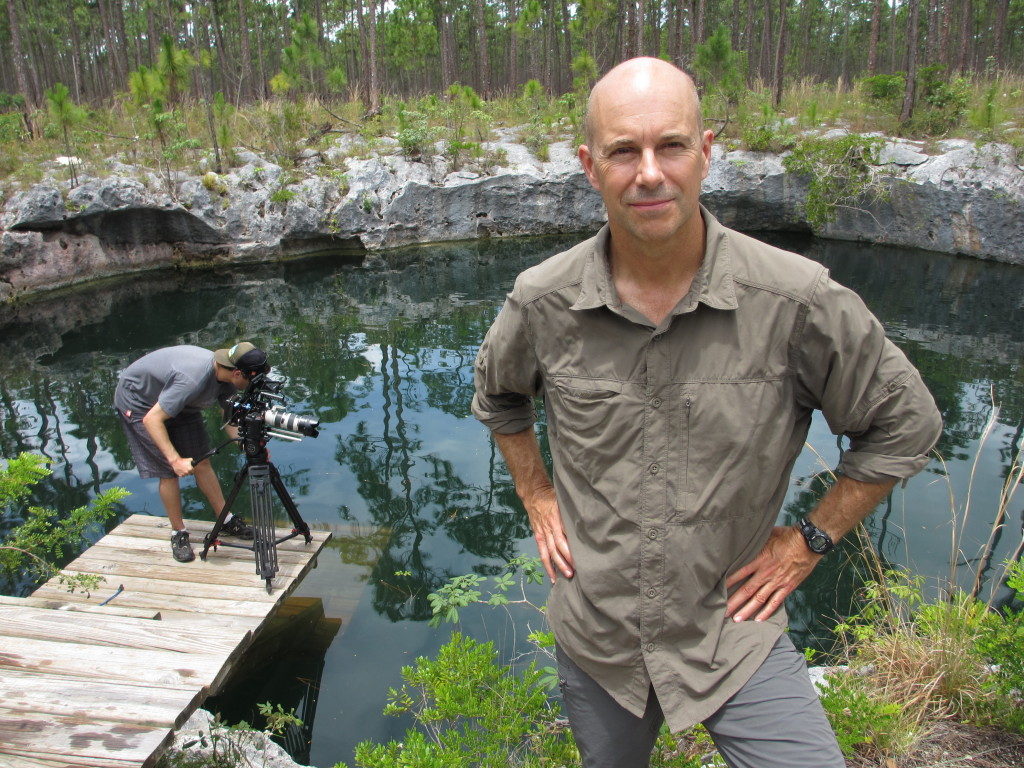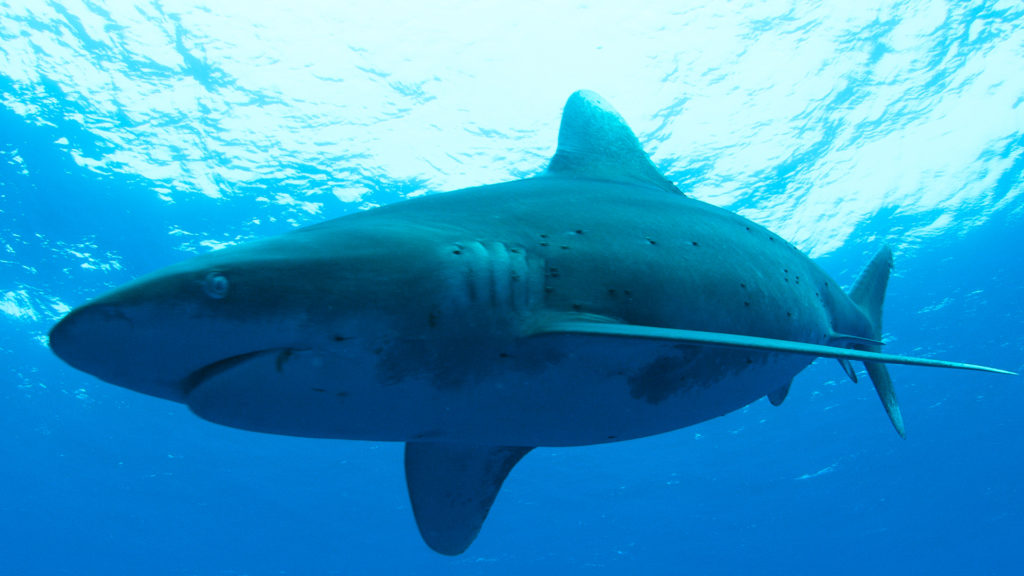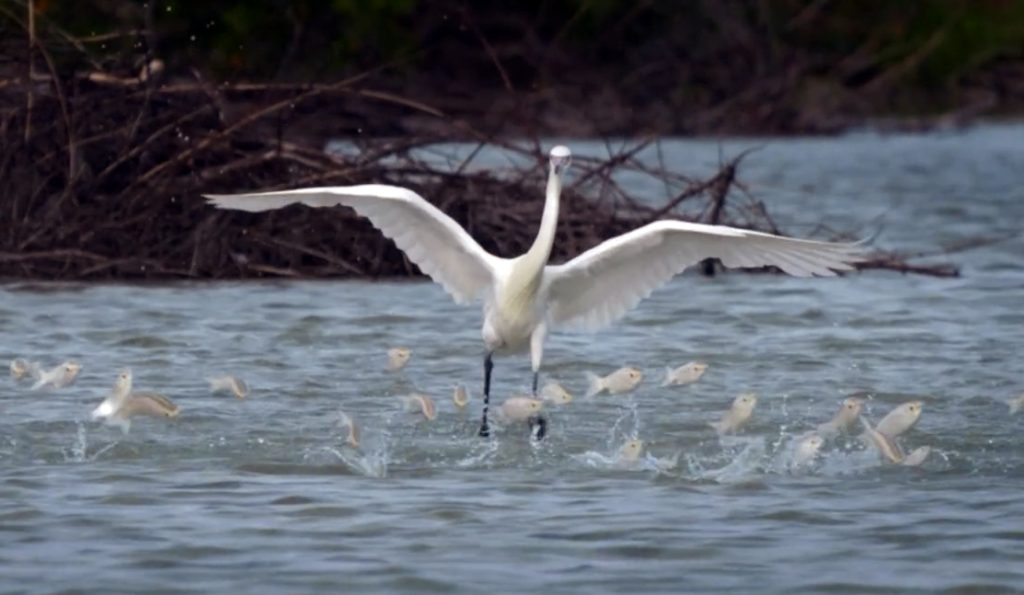
For most people the word Bahamas conjures up images of white sand beaches, rum drinks and great sunsets. But for documentary director Ian Herring, his perspective changed when he visited in 1996 to film lemon sharks. “We were standing in a Mangrove swamp,” he explains. “There were full-grown sharks over two meters long in this really shallow water. It was such a contradiction to see them in this way. I think coming back, to film again, was to reconcile what I thought I knew with what I witnessed.”
Bahama Blue is a six-part series captured in Ultra High Definition cinematography exploring the diverse ecosystems that are stretched across the chain of limestone islands we know as the Bahamas. In classical documentary form, Bahama Blue focuses on important actors: the creatures themselves. With patience, the team was able to locate and film these animals in their natural habitat. “Our idea is shift away from the humans and just let the animals and their behaviours reveal the story in a fresh and entertaining way,” says Herring. “The pressure was on award-winning cinematographers like director of photography Sean White, and underwater camera operators Andy Brandy Casagrande IV and Mark Rackley. Filming a natural history series like this means managing the three W’s: Weather, wildlife and water. It’s never routine.”
This also meant finding a balance with arguably the most famous occupants of the Bahamas: their sharks. “I understand the obsession,” says Herring. “Having been in the water with them, you really get a sense of their power and how perfectly adapted they are to the ocean environment.” With at least forty different types of sharks, the Bahamas has become a world leader in their protection, having fully banned the shark trade in 2011. “What we learned is that when you protect apex predators like sharks, it benefits the whole ecosystem,” he adds. “So to focus on the other creatures within this environment was also very attractive to me.”
How does a filmmaker from Canada navigate such a mysterious and diverse place like the Bahamas?
“The best way is through the researchers and scientists. They are an amazing network of people who have a specialized knowledge of the Bahamas. It’s not a large community – everybody knows each other and the research that is going on. Once you get connected to this network, you discover things you never knew existed. And someone can tell you exactly where to find them or offer to take you there,” recalls Herring.
This technique resulted in some lucky finds. “Birds, for example, are hard to film,” he explains. “They are creatures of the sky and we are creatures of the land. But coming back from a day of shooting iguanas with wildlife biologist Joe Wasilewski, he pointed out a solitary bird stalking the tidal flats: the Reddish Egret, a rare white phase type that stands a meter tall. “My initial reaction to this was a pretty bird standing on the beach, not much more than that,” remembers Herring. “But Joe pointed out that the egret had a particular way of feeding. This shy bird would herd the fish in the shallows and get them corralled in a group, then strike and take out a fish. It sounded amazing, but it seemed really unlikely that it would do so while we were watching.”
“Our director of photography Sean White was filming juvenile lemon sharks from the beach and they had finally arrived. He said if we want to film the egret we would have to relocate. It was a classic filmmaker’s dilemma: a shark in the hand or a bird in the bush, so to speak. My initial response was, ‘No! Don’t move because this bird will never do what you want in front of the camera.’ Within half a minute of me saying this, it suddenly started its hunting behaviour. Sean made a quick switch and managed to capture its spectacular leaps and corralling. It was running through the shallows opening its wings, flapping them and herding this group of fish until they were literally bursting out of the water. It was fantastic! This was a magical moment in the world of documentary filmmaking that required skill but also came down to listening to the local experts and a bit of luck.”
In addition to the wildlife, the geography of the Bahamas also provided amazing opportunities for filming. The Bahamian caves and blue holes are unknown to most travellers to the Bahamas because only certified cave divers are able to access these subterranean features. On one hand they are easier to film because they are not going anywhere, unlike creatures who may or may not show up. But on the other hand, you must bring everything you need to survive with you, including air and light to see and film by.
“So the technical challenges make it quite dangerous to film. But we are not focusing on that in the program, the human danger, ” explains Herring. “We purposefully focus on the geology and special nature of these formations.”
With spectacular imagery, Bahama Blue is both entertaining and educational, drawing the viewer into the lives of elusive creatures, yet highlighting the fragility of the ocean environment. In a market dominated by character-based television programming, Herring believes that there is still an appetite for natural history programming. “There is room in our lives for us to be inspired and filled with wonder. There really is a value to that.”
Bahama Blue was produced by award-winning Canadian producers Ian Herring and Maija Leivo of Parallax Film Productions.
Bahama Blue premieres in Canada on Wednesday May 6, 2015 on the Love Nature channel.
Check out our Facebook page and Tweet us @BahamaBlueTV.



